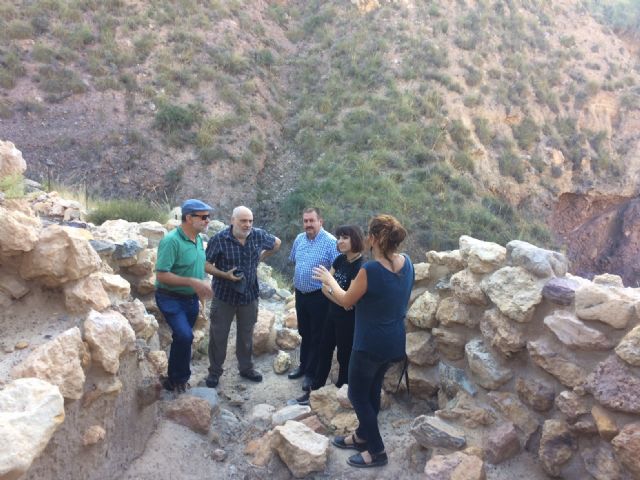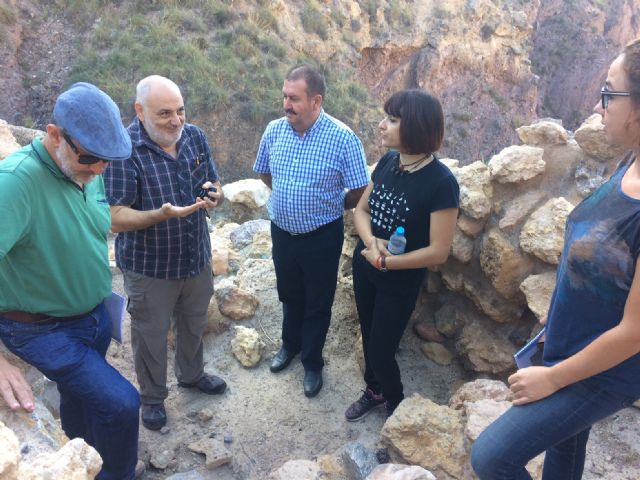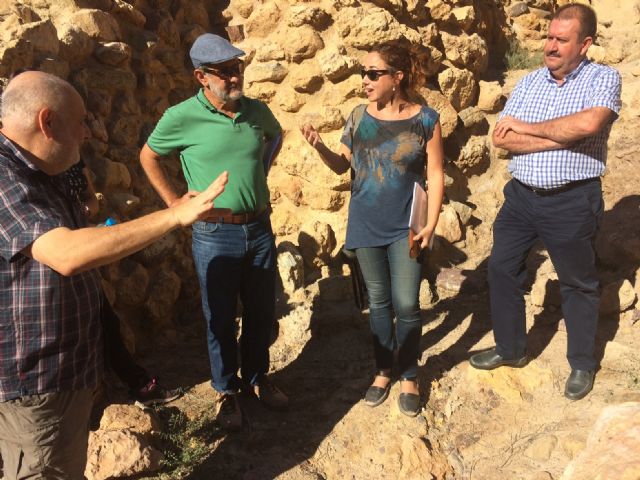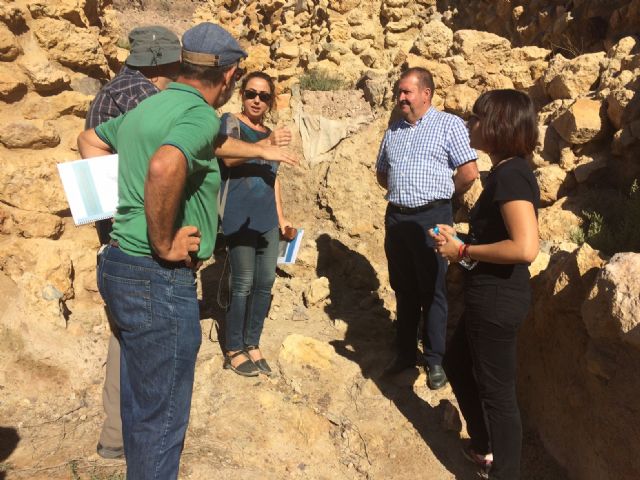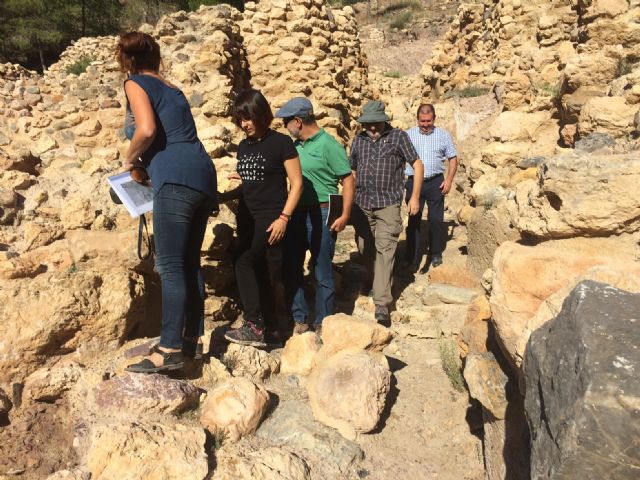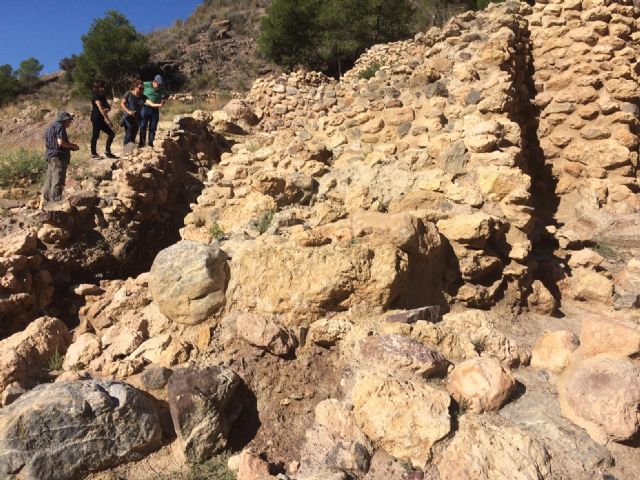Technicians from the Historical Heritage section of the Directorate General of Cultural Heritage of the Ministry of Tourism, Culture and Environment have recently visited the ravine of the Salado Ravine, which exists in the complex of the archaeological site of La Bastida, in order to evaluate the current state of this infrastructure and take urgent actions to prevent their gradual degradation by the inclemencies of the weather.
These have been accompanied by the Mayor of Totana, Andrés García Cánovas, and technicians in charge of the research team of the Autonomous University of Barcelona (UAB) responsible for the excavation, musealization and dissemination project.
This research combines extensive archaeological excavations and specialized analyzes on past and future discoveries of La Bastida.
The intention of researchers and institutions involved in the project is to develop as soon as possible, in the short term, emergency interventions, and then draft a project that solves existing problems of foundations and the threat of collapse of the wall by the effect of runoff due to torrential rains.
Initially, it was agreed to carry out a technical assessment to specify the most urgent measures aimed at the safety, containment and protection of the well of the wall, as well as to quantify an estimate of its economic reach.
The technicians have verified the deficiencies of the mortars of the wall that are susceptible of repair by the immediate detachment;
and it has been valued to place a layer of sacrifice before replacement of fallen elements, structural consolidation and execution of works of drainage of later one.
Unique wall in Europe
The fortification of the Bronze Age, apparently unique in continental Europe, was discovered in the archaeological site of La Bastida, in Totana (Murcia), in 2012, in excavations led by Vicente Lull, professor of Prehistory of the UAB.
Built for about 4,200 years ago, the fortification has walls of three meters wide, solid square towers of up to seven meters of original height, a monumental entrance and a pointed archery, a preserved architectural element complete and unique in Europe.
The finding confirms, together with the other discoveries made in recent years, that the city was the most developed settlement in Europe, in political and military terms, of the Bronze Age, comparable only to the Minoan civilization of Crete.
The wall could protect a 4-hectare city located on a hill, and has architectural elements that involve the intervention of people with military knowledge from the East, similar to the ancient civilizations of the Mediterranean, as the second city of Troy.
The fortification was built with large stones set with mortar and reinforced by massive pyramidal towers distributed at close distance between them, and about 4 meters in the side.
The original height of the defensive complex would be, according to the experts, between 6 and 7 meters, and for the moment six towers have been discovered in a section of 70 meters, although the perimeter of the fortification was of about 300 meters.
The entrance to the enclosure was made through a corridor flanked by powerful walls, which apparently closed with large doors embedded between thick wooden sticks.
In addition, the finding re-examines what is known about the origin of economic and political inequalities in Europe, the formation of the military establishment and the role of violence in the formation of traditions and identity.
One of the most important architectural elements discovered at the time was a pointed arch that ends a porch, a secondary gate near the entrance, which is whole and unprecedented in European prehistory.
Fortification, according to the researchers, was designed for combat, and is an innovation in the art of attacking and defending by people with experience in struggles unknown up until that time in the West.
The excavations carried out and the result of several carbon dating 14 indicate that La Bastida was probably the most powerful city in continental Europe during the Bronze Age and a fortified place from its beginnings, around 2,200 before our era, with a defensive system unusual in the Europe of his time.
The fortification is not the only finding, since between 2008 and 2011 came to light numerous houses of more than 70 square meters spread over the 4 hectares of the city, and other smaller buildings separated by accesses, corridors and squares.
There are also remains, in this complex, of a large raft with a 20 meter long dam that can store almost 400,000 liters of water, revealing the needs of the population, incomparable at the time.
The discoveries of the Bastida reveal a military, political and social rupture, and the establishment of a violent and classist power that lasted for 7 centuries and that conditioned the development of the communities of the rest of the Peninsula.
For experts, this discovery would rethink what is known about the origin of economic and political inequalities in Europe, the formation of the military establishment and the role of violence in the formation of identity traditions.


